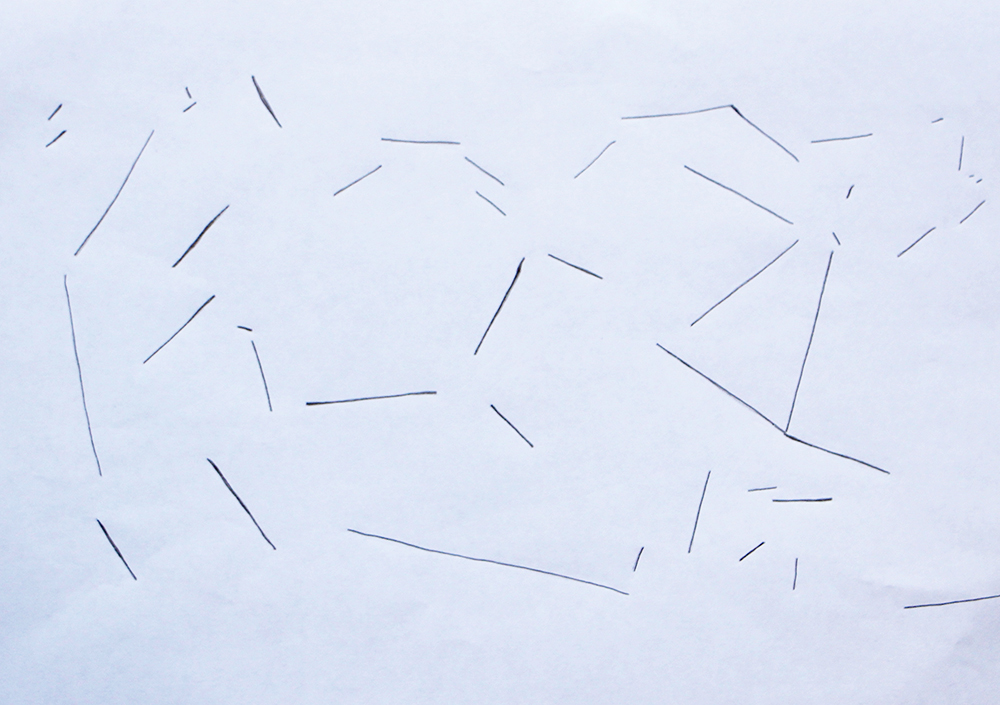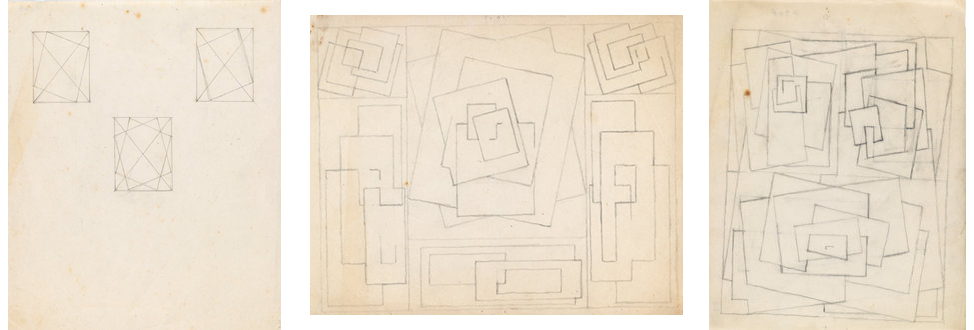

Here's a nifty drawing exercise to try out at home!
Teens and adults will probably find this activity most interesting, but people of all ages can try it out. The aim is to use your observational skills and explore spatial relations, forms and negative spaces.
Follow the steps below!
What you will need:
- Camera / camera phone
- White paper
- Tracing paper or baking paper
- A pencil
- A black ink pen
- A mess!
Step one: Find a mess and photograph it!


Take an aerial-view photograph of a surface or floor at home that has lots of objects arranged at random on it—the messier the better! It is best if you happen across the arrangement instead of creating it—this keeps your observation open and free. If you're a very tidy person and can't find a mess, gather a selection of things and disperse them randomly on a surface. You could use clothes, knick-knacks, twigs, or anything you have at hand that is distinctive or simple in its shape, and that is not valuable. You can also take a photograph of things outdoors, like flowers in a public park.
If you don’t have a camera, you can skip straight to Step 2 once you find your mess.
Step two: Make a line drawing


Take a minute to look closely at the basic shapes in your photograph. Draw an outline of these forms. Do not worry about detail and accuracy; you want to get a sense of the arrangement, where things are placed and how the shapes interact with each other.
Step three: Make a list of shapes


Next, look closely at your line drawing. Look at all the shapes you have marked, including shapes made by the negative space (the space between the objects).
On a new sheet of paper, start to single out and draw each shape you see. You are making a list of shapes.
Step four: Choose your favourite shape and experiment with it


Looking at your list of shapes, are there any that interest you? Any you would like to see in a pattern or an abstract drawing? Choose one or two and start experimenting with your shape on a new sheet of paper. The drawings you make here can later be worked up as collages, paintings or even sculpture.
Alternative approach: Explore spatial relations with lines


1. Go back to your line drawing (we chose our drawing of the dishes in the sink), and use a black pen to draw lines connecting the objects together. You can decide where and how often you connect the objects. You are making abstract measurements of how these particular objects relate to each other in your drawing.
2. Once you have marked the lines, cover your drawing with a sheet of tracing paper. Focus only on the connecting marks you just made and draw them with a pencil on the tracing paper. Go over the line a couple of times to make sure your pencil mark will transfer.
3. Get a new sheet of paper and flip the tracing paper over so that your pencil marks are face down on your blank sheet of paper. Trace over the marks with a pencil (check to make sure they are transferring; if they aren’t, try leaning harder on your pencil).

Result! Once you have transferred all your lines you are left with a unique articulation of spatial relations—the lines that connect the objects. Now you have a starting point for a pattern, an abstract drawing or a painting!
Be inspired by Mainie Jellett

Take a look at these preparation drawings made by Irish artist Mainie Jellett (1897-1944).
She produced these drawings to figure out movement in shapes and modes of rotation. These drawings were a crucial step for Jellett in the creation of her celebrated abstract paintings (you can view hundreds of Jellett's drawings on our online collection).
To understand rotation, Jellett would often take a shape, for example a rectangle, and repeatedly draw the shape at multiple angles, layering each shape onto the other. She would also use a process known as translation. This involved taking one shape and repeating it across different locations on a page.
Try rotating and translating one of your shapes!
We'd love to see your drawings!
Tag your drawings #NationalGalleryIRLAtHome and share them with us on Twitter, Facebook and Instagram. Or email them to us at [email protected]
Discover more
-

Mindfulness and Art
Some tips for slowing down and reflecting on art.
-

Interior Lives
Exploring domestic scenes in the collection

